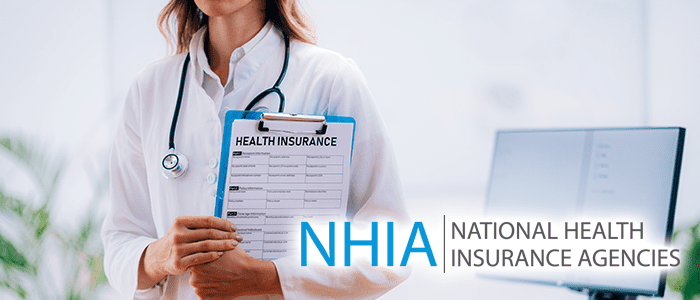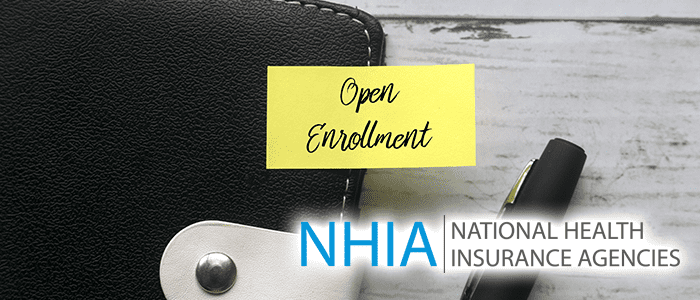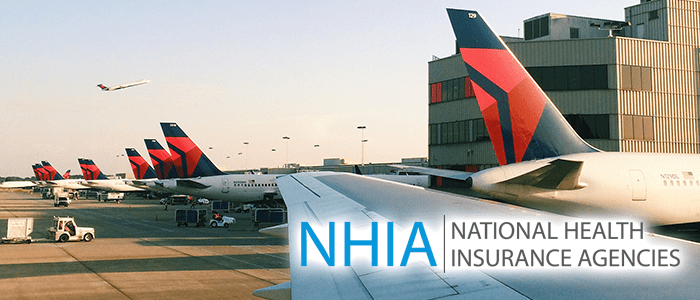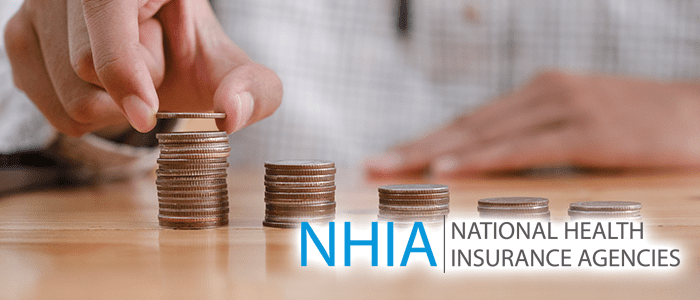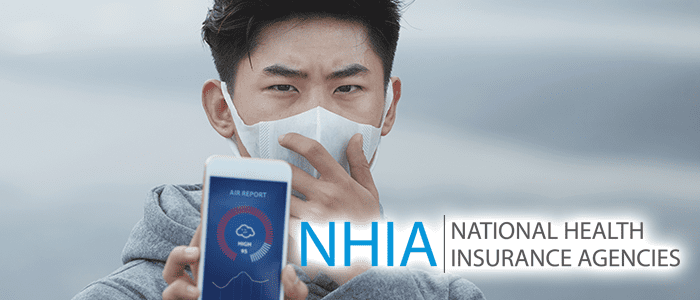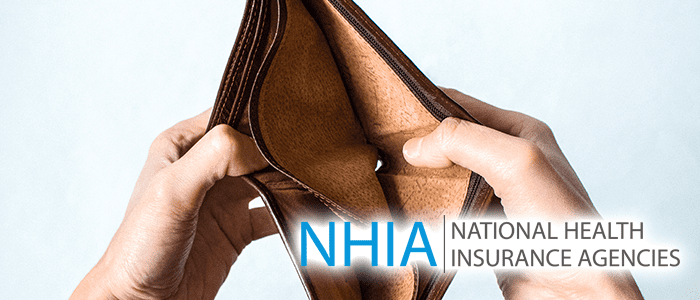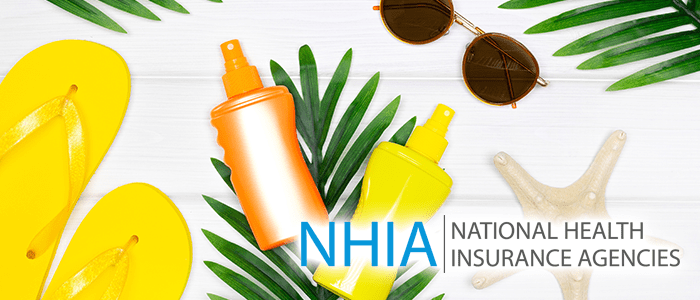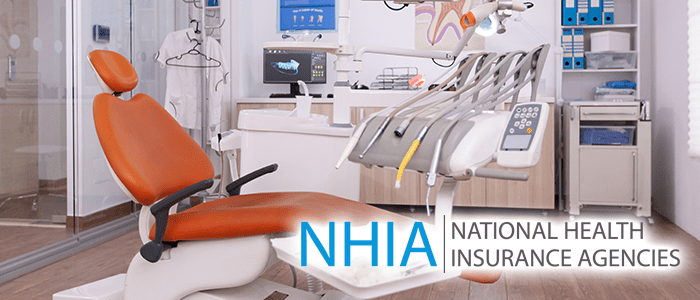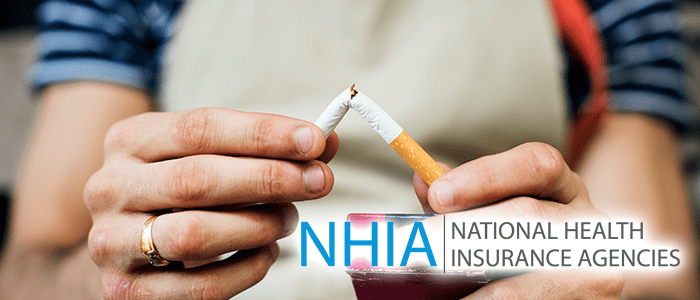In February of this year, newly sworn-in President Biden authorized a special enrollment period into all healthcare.gov insurance plans. The Biden administration did this as an additional measure to assist with the financial impact of Covid-19. With millions hospitalized and in need of costly medical interventions, the special enrollment period, along with the newly created subsidies, gave many people without health insurance coverage the opportunity to apply for the health insurance they so desperately needed.
Special Enrollment Period Extension
Initially, the administration slated the special enrollment period (SEP) to last for three months. However, the sheer volume of those applying during the special enrollment period signaled the need for an extension. Shortly after the government enacted the SEP, they extended the timeframe to give more people the opportunity to participate. Next, they decided that six months should be allotted for special enrollment. This decision moved the end of the SEP into the middle of August.
The Numbers
During the SEP, more than 2.5 million people signed up to receive healthcare coverage. Additionally, more than 81.5 million receive coverage through Medicaid or the Children’s Health Insurance Program. This data comes from March of this year.
Affordability
Results as early as June of this year indicate that many people took advantage of the special enrollment period. They did so to either upgrade their plan or to reduce their overall costs. With many people out of work, finding ways to save money is everyone’s top priority for the foreseeable future. According to estimates in June, roughly one-third of all returning marketplace users were able to save $10 or more per month on their plan. In fact, over 2 million returning users were able to lower their plan premiums by an average of 40% by taking advantage of special tax credits and subsidies made available through the marketplace. For new users, the average monthly plan premium was approximately 25% less overall than in previous years. This was made possible through the use of premium tax credit advances.
More Coverage Than Ever
According to the Department of Health and Human Services, a newly released report shows that a record 31 million Americans now have health insurance coverage. Also demonstrated by this report, each state showed a reduction in rates of uninsured since the expansion of the ACA took effect, and premium tax credits and additional subsidies were provided during the special enrollment period. One of the biggest boons of the special enrollment period was the expansion of Medicaid by certain states to persons who were previously ineligible. This change accounted for 14.8 million newly enrolled Medicaid recipients who previously had been denied coverage for various reasons.
It is nearly November, which means it is time to start preparing for Health Insurance Open Enrollment. Whether you are looking to get a new or first-time health insurance plan or if you are already covered but want to make sure your plan is still the best fit for you and your family, then now is the time to start looking.
What is Open Enrollment?
Open enrollment is the standard period every fall, wherein you can apply for coverage for the following year. For example, if you are interested in health insurance coverage for 2022, then you would need to apply for insurance in the fall 2021 open enrollment period in order for your coverage to begin on January 1, 2022. The Federal open enrollment period is from November 1 until December 15. Most state-run marketplaces also adhere to this schedule. However, some states do have special enrollment periods as well.
What About Qualifying Events?
If you need coverage right away, there are certain life events that qualify you to apply or adjust your insurance coverage outside of the open enrollment period. Some of those life events are as follows:
- Employment status change
- Marriage
- Divorce
- Having a baby or adopting a child
- Death in family
- Loss of health insurance coverage
- Becoming a citizen
It is important to remember that this list is not exhaustive. There may be other events that could qualify you for a special enrollment period. Also, you only have 60 days from the date of the qualifying life event to apply for coverage.
How to Apply?
If your health insurance coverage is through your employer, then your HR department will assist you in applying for the coverage you need. If you are applying for coverage through a health insurance marketplace, then you have a few options. You can either go to healthcare.gov for the federal health care marketplace and select Enroll or Login to begin.
In a move that is sure to spark commentary, Delta Airlines has stated that beginning on November 1, any employees who choose to remain unvaccinated will pay approximately $200 more per month to continue on their employer-sponsored health insurance plan. This number, of course, varies depending on the coverage and plan selected. It will also limit how many sick days unvaccinated employees are eligible to use should they contract COVID-19.
Additional Guidelines
Delta does not stop there either. They have also stated that unvaccinated employees will be subject to weekly testing. For employees in the US, where infection rates remain high, weekly testing will go into effect beginning September 12. On top of this, employees who test positive will be required to remain home while they are sick. As previously stated, there is a limit to the number of sick days unvaccinated employees will be eligible to use. Under current legislation, Delta employees who contract the virus are provided with so-called “COVID pay protection” for 14 days before they have to use their regular sick days. This legislation ends on September 30, at which point Delta will only provide COVID Pay Protection to fully vaccinated employees.
Mask Mandates
All unvaccinated Delta employees must wear a face mask in all indoor areas. Mask mandates for air travel remain in effect for everyone until January 2022. That is unless Delta chooses to extend the mandate at some point.
Financial Incentives
In a statement to CCN by Delta CEO Ed Bastian, he states, “While we can be proud of our 75% vaccination rate, the aggressiveness of the variant means we need to get many more of our people vaccinated, and as close to 100% as possible”. These measures add an additional financial incentive to get the vaccine. It also helps to offset some of the cost to the company should any unvaccinated employee contract the virus and require medical intervention. The company continues to struggle to recover after the 2020 shutdowns and loss of revenue.
Broader Implications
According to Delta, since the start of the latest variant, only unvaccinated employees contracted the virus. These measures provide a level of personal choice regarding the vaccine while still providing a greater incentive to get vaccinated. This is a step further than some rival airlines who have gone as far as to mandate vaccination for all employees. Two other airlines, Southwest and American, have also opted not to mandate vaccination fully.
Eighteen months after the first coronavirus-related lockdowns began, a new debate is raging through every social sphere. That question is whether or not to get vaccinated against COVID-19. Many people remain concerned about the vaccine’s efficacy or worry about potential long-term side effects. On the other hand, the concern for the spread of the virus is valid as cases continue to rise and new variants emerge. Learn about the potential insurance surcharge that employers could charge unvaccinated employees.
Vaxxed Vs. Unvaxxed
The conversation between vaxxed and unvaxxed is ever-more prevalent as more and more people are either returning to the workplace or are finding ways to delay returning to the workplace in an effort to maintain distance from potential exposure. So much so that the conversation has moved beyond coworkers and into the offices of CEOs, COOs, and HR. Employers are considering what their options are to keep their business running while providing a safe work environment. While some big corporations are beginning to mandate vaccination, other smaller corporations are weighing their options.
In order for some of these smaller companies to remain afloat, they have to respond carefully. Not wishing to alienate their employees or their clientele, they must walk a fine line between civil liberty and public safety. To that end, some employers are looking into a precedent set by an unexpected sector: smokers.
Smokers
There is a practice in insurance companies to charge a higher premium to those who smoke cigarettes. The logic behind this is simple. Smoking is a personal choice that we know causes a number of health issues, including cancer. These health issues cost insurance companies and employers a great deal of money when it comes time to treat. Therefore, insurance companies charge a higher premium to the individual to help offset some of those costs.
The Insurance Surcharge
Employers who remain reticent to mandate vaccination before returning to work are now looking into charging a higher premium to their employees who choose to remain unvaccinated. Some have suggested that the higher premium could be $20-50 more per paycheck to maintain the same level of coverage. In this way, employers are able to allow employees to make the choice for themselves regarding vaccination. On the other hand, they’re providing a financial incentive toward vaccination. It may not be the ideal scenario, and it is one that must be looked at for the legal implications before it can be rolled out.
A new term is showing up more and more in the media – And you might notice as you’re using your computer that this term is even appearing on your desktop near the weather report. But what does it mean, and what’s the number represent? The answers to these questions are important to maintaining good health and being aware of the potential healthcare conditions of your environment, and with the wildfires blazing in Canada over the duration of July, chances are you have heard the words “air quality index” a lot indeed. So what is it? How can we use it? Let’s start simple.
The Basics
Air Quality Index is the measure of the density of five specific polluting factors. Those factors are ground ozone, particulate matter, carbon monoxide, nitrogen dioxide, and sulfur dioxide. The Environmental Protection Agency (EPA) established it as a way of telling Americans how clean their air is from day to day, so they can better make choices regarding their health and outdoor activities.
In July, parts of the country experienced an Air Quality Index of nearly 500, the year’s highest reading. Some states broke records. A level of pollution that thick can make it hazardous to step outside. However, even a more typical measure such as an Air Quality Index of around 100 can warn those with respiratory conditions or a vulnerable constitution to be careful.
How is it Read?
Because the index falls between a range from 0 to 500, it can be hard to understand exactly what you’re being told. The higher the number, the more pollution there is. A level of air pollution less than 100 is below the levels of pollution known to cause health defects. Once it crosses that threshold and reaches 101, the air is still safe for most people, but the elderly and children are at risk of developing health complications such as asthma attacks or an aggravated respiratory disease. A number above 200 is very unhealthy.
Color Codes
The index also categorizes scores into six differently colored sections, with green and yellow presenting the healthiest air conditions. Orange, red, purple, and especially maroon represent an increasing level of danger.
Times are hard. Many families have to pick which bills they will pay each month. Unfortunately, health insurance premiums are not exempt from this decision. Most health insurance providers have a “grace period,” usually lasting a month to three months. During this grace period you can make late payments, and the buyer can maintain coverage. However, what if you’ve already missed a payment? What can happen to your coverage, and what will happen next? This week, read on to learn what happens if you don’t pay your premium.
First Off
The simplest answer is that if you don’t pay your premium and your grace period expires for a plan offered in a health insurance marketplace, your coverage will end. When your coverage ends, you will lose your benefits. However, some factors can change how long your grace period is. For example, the company might consider whether or not you’ve paid at least one premium in the year. Outside factors also come into play, such as whether or not someone else subsidizes your insurance.
Grace Periods
A three-month grace period usually applies to individuals with federal subsidies and those who paid a full month’s premium previously. Those who don’t meet these criteria have a grace period of one month. This also applies to plans purchased outside of the health insurance marketplace, as those are not eligible for subsidies.
Enrollees who do not receive subsidies may even have their coverage terminated retroactively to the end of the month where the premium was last paid. If that happens, it means you may lose benefits for a recent medical bill.
Those who receive subsidies will lose coverage if their premiums go beyond three months overdue. At that point, coverage will retroactively terminate to the end of the first month of the grace period. Suppose June is the first month of payments that you miss. Then, you receive medical care at some point in July. At the end of August, if you don’t pay, your July appointment will come out of your pocket.
Many people don’t believe they need it. There is a strange stigma around purchasing life insurance as if it is inviting disaster into your life or will somehow harm you or your family. Nothing could be further from the truth. Life insurance is about protecting the people you love. While the decision can’t be boiled down to a purely emotional or financial decision, it is ultimately about protecting the ones you love and safeguarding their future in the event of your absence.
Here are five good reasons for you to consider purchasing a life insurance plan.
Life Insurance is for Living People
Many people reckon that the superstitious aspect is reason enough not to get it, but life insurance is not about you at the end of the day. It is a policy that protects your loved ones. If anything were to happen to you, your insurance plan would be there to protect and provide for them even when they have to continue ahead without you. It’s for their sake, not yours.
Life Insurance Provides Hope
Every loss is tragic. The grieving process and the healing process can and all too often are disturbed by the burden of difficult decisions that are forced on the bereaved. They must make hard decisions quickly and often after their loss. At a point in time when their emotions may have compromised their ability to do so, life insurance gives the survivors the chance to adjust over a gentler period of time than being thrown to the wilderness may allow for.
Your Policy Shows How Much You Care
If the worst should happen and your family is suddenly without you, your policy – That you took out for them – Can be a source of comfort, another gesture to remind them of how much you love them. It ensures that you can still fulfill promises and obligations to them and provide them a source of stability in a very uncertain time.
Does your tooth hurt? Are your wisdom teeth starting to hurt, or is another problem plaguing your mouth that requires dental care? You’ll need dental insurance unless you want to give your dentist thousands of dollars in cash. Dental procedures, because of their precise nature and highly trained specialists who perform careful work, are more expensive on average than other sorts of medical expenses. The easiest and most direct way to reduce your dental fees is by getting dental insurance, and insurance can even open the door for preventative care by allowing you to go in for regular checkups that many people avoid because of the expense involved. There are other ways to reduce your overall cost of dental care, however.
It’s important you learn how to reduce these costs, as dental care is essential. Gum infection is associated with an increased risk for heart attacks and heart disease, but how can you get good insurance on a budget? Read on to learn how to reduce dental fees in order to save yourself some money.
Try Getting a Plan Through Work
Most employers offer their full-time workers a dental plan, and those that do typically pay half or more of the premium costs, and many plans fully cover exams, x-rays, and cleanings. On average, basic procedures such as drilling and filling can be covered by up to 80%, and even larger cost items such as crowns and root canals will fall into the half-pay policy. Plans through your employer typically have an annual deductible of $50-$100, and many insurers have a yearly limit of around $1250.
Could a Dental HMO Work?
DHMO – Or Dental Health Maintenance Organizations – Tend to be available in larger urban population centers. These tend to charge a few hundred dollars per year, and enrollees get cleanings twice per year and exams at no added fee, with partial coverage for many more procedures such as fillings or crowns. A fifth of all dentists nationwide participate in these programs, so check and see if there is a DHMO available in your area.
Check Community Health Centers
These can offer low-cost care but might have a limit on what services they offer, and many have a waiting list. To find a center near you, give your local health department or state dental programs.
When a patient arrives at a care facility, they’re often bringing more problems than just a body in need of some treatment. People have broad and complex needs, both physically and emotionally. These days, many people have spiritual, social, or holistic needs that are unmet. Whole-person care is the idea that all of these needs overlap. It also posits that leaving a problem in one area may drastically affect the rest. Diagnosing just the body isn’t the entire issue anymore once a medical professional adopts a policy of whole-person care.
What is the Focus of Whole-Person Care?
With such a broad topic, it can make sense to have questions about what the focus is of whole-person care. As the name implies, the focus is on the whole person as an individual. It is a patient-oriented use of various healthcare resources to improve the quality of life, not just the quality of health, which respects the choices and desires of the patient and does not suppose upon itself.
Whole-person care comes from the ideas of integrative medicine. Integrative medicine aims to resolve an issue before it leads to dysfunction or disease. While some ideas presented may seem based on emotion, evidence is on the side of an integrative approach. This approach coordinates the well-being of a patient by helping to support their health in four other major areas. Whole-person care is used in Complementary Health Approaches to treatment, and last year over 50% of physicians recommended at least one of these approaches for the treatment of their patients.
What do Whole-Person Care Providers Offer?
Whole-person care providers promote an individual’s well-being by combining traditional assessments with observations about the four major areas of people’s lives. Those four areas include the patient’s mind, spirit, environment, and social health. Both mental sharpness and emotional health are important to the patient’s mind. Spiritual needs are the beliefs, values, or faith-centered principles that sustain and support individuals. Oftentimes, this is an area where nurses can feel deficient, as focusing solely on the material elements of care can leave them with a sense that their care is incomplete. A person’s environment can also drastically impact these four areas as well as overall health. Not having access to nutritious food, clean air, and room to exercise can have a person suffering.
As health suffers, so too does social well-being. Humans are a social species, and whole-person care recognizes this. Because of this approach’s success in improving overall quality of life, 42% of hospitals have begun to integrate whole-person care treatments with their care plans.
Now that the school year is over, you may have noticed something missing. During the school year, it’s common to run into all sorts of health concerns, and the structure of the day to day life can help you and your family stay on top of regular check-ups. Without the school year to guide you, it can be tough to determine where your healthcare focus should be. After all, your kids have been looking forward to it all year. Now that summer break is here, it is more important than ever to know how to keep your family healthy so you can enjoy these cherished months worry-free.
Summer Break Structure
It’s not uncommon for things like bedtimes, mealtime, and household rules to relax during summer vacation. Unfortunately, as fun and relaxing as it can be for both you and them, this isn’t always the best approach to being healthy over the summer. This is especially true when you consider that breaking habits for the long summer months can make it harder or impossible for children to get back into patterns of good behavior once the summer months end. Studies have shown that children gain weight easier over the summer months, and they are more likely to become obese over summer break.
Make Good Dietary Choices
This is the big one over the summer. You can still make lunch for your kids even if they aren’t taking it to school with them. Having a meal available for the day, or teaching them to prepare their own, ensures that they don’t rely on snacking or grazing on unhealthy foods that are more easily available. If they have readily available meals throughout the day, they are less likely to consume unhealthy foods and beverages.
Even if you don’t prepare lunches, simply making a few changes around the house can have a huge impact. This may mean making better dietary decisions for yourself, too. If it’s not in the fridge, how can they get a soda? Stock it with healthy choices, so if they do decide to graze or raid the kitchen during the day, all they’ll find are healthy options. Limiting the availability of food can be important, too. Even though fruit and vegetable juices are healthier, they can still be rich in sugars that pack on the pounds. This is true of fruits, too – There is definitely such thing as too much of a good thing.
Use all the extra downtime to get your kids involved more than they are during the school year. Consider planting a family garden so they can enjoy the benefits of healthy, locally sourced food while also learning and developing good habits that they can carry with them into the next school year and into life beyond. Children who learn how to grow, prepare, and cook their own healthy foods are shown to eat healthier in general, even well into adulthood.
Medical professionals say dental health can be the window to a picture of a person’s overall health. Can that really be true? After all, teeth have gone thousands of years without comprehensive dental care. Surely a person can skip out on their dental health and not suffer too greatly, right? Unfortunately, no. Practicing good oral hygiene is essential to promoting overall health and improving your appearance and quality of life. Read on to learn the importance of dental health.
So It’s Important, but Why?
Having good dental health will often lead to or complement overall health. Dental problems can impair your ability to eat nutritious foods or communicate well. They can lead to long-lasting pain and cause bad breath. Not many people know this, but a problem in the mouth will show signs “downstream” as well. By failing to maintain healthy teeth and gums, you may see issues with pregnancy complications, chronic and painful inflammation. It can even intensify conditions like arthritis. There are many problems that poor dental health can cause, but why?
Some studies have suggested that the bacteria present in patients with gum disease can use blood vessels in the teeth to travel to the heart, causing inflammation, clogged arteries, heart disease, or even strokes. Can bad teeth really lead to problems with your pregnancy? Absolutely. Gum diseases such as periodontitis have been linked to premature births and low birth weights in pregnant women. If you’re diabetic, it is especially important to maintain good dental health as diabetes reduces your overall ability to fight infection, which can make dental problems even worse. Before the advent of modern medicine and dental care, only 200 years ago, dental abscesses were the single largest identified cause of death for thousands of years.
What are the Signs of a Serious Problem?
There are many obvious signs of a problem with your dental hygiene, and one of the first that you’re likely to notice is pain. Toothaches are not pleasant, and because dental problems can lead to such serious complications, your body is quick to let you know when a problem is present. See a dentist if you experience a toothache, or if you have bleeding gums (even during brushing), swelling inside or around the mouth, tenderness or blisters that have trouble healing, or changes in the texture or appearance of soft tissues in your mouth. These could all be signs of a potentially serious condition, such as chronic gum disease or even oral cancer.
How Can I Improve my Dental Health?
Keeping in regular contact with your dentist and other oral care specialists is essential. Brush for at least two minutes twice a day, floss daily, use fluoride toothpaste and see your dentist at least every six months for check-ups and cleaning. Diet is also essential, as a sugary diet or one that frequently involves consuming soda will harm your dental health severely. Limit alcohol, smoking, or smokeless tobacco products, as these can and will degrade the quality of your oral health. The soft tissues of your mouth are very sensitive, and being mindful of their care and the overall health of your mouth will help your teeth last your whole life.
You know it’s hurting them, and they’re probably aware of it, too. Nicotine addiction affects some 50 million Americans who are users of at least one type of tobacco product – cigarettes, chewing tobacco, or alternative smokeless products. Nicotine addiction is the single most pervasive addiction in America. No other controlled or freely available substance subjects more Americans to abuse of that substance. The healthcare expenses of this epidemic are estimated to be in the range of nearly two hundred billion dollars annually. The more personal costs can seem just as large. Those who suffer from nicotine addiction struggle with poor health, struggling finances, physical pain, shame, and more. When a loved one decides it’s time to quit, it may be a relief that is complicated by disappointment as it seems they may choose to sabotage themselves time and again or even lie to you. It’s important to understand that smoking is not a bad habit. It is a debilitating addiction with many complicated aspects that make the process of trying to quit smoking very difficult. However, there are ways you can comfort and support somebody trying to quit.
First, Understand
Trying to quit smoking, as we’ve said, is not easy by any stretch of the imagination. Because addiction to nicotine is such a complicated condition, there are so many obstacles your loved one will face on the road to recovery. Many smokers say that quitting was the hardest thing they had to do in their entire lives, and a big reason for this is withdrawal. While physical symptoms can go away in as little as a few days, cravings last much longer. This is part of why they will depend on you, to a certain degree, when quitting. To help, ask yourself a few questions.
Have you argued about smoking, or are you okay with it if they smoke around you? Do you avoid conversations about smoking? Has a problem with either your health or theirs changed any of these factors? By understanding your position in their journey to quitting, you can better understand ways to help them. You may need to avoid criticism and instead celebrate their small victories, such as going a full week without a cigarette or cutting down on their consumption. Encouragement will go a long way, but so will solidarity. If you smoke, avoid doing it around them, or even put forward an effort to quit as well.
Talk About It
It isn’t easy to start a conversation about smoking. Sometimes a smoker will approach the situation themselves, but if they don’t, it’s important to know they are dealing with a hard situation and would probably appreciate some support. Ask if they’ve considered quitting, or mention that you might have seen them smoking less. Consider telling them you’ve read something in the news about the harmful effects of smoking, and see what they really think about their addiction.
Addictions are very isolating. They create a sense of shame, and this causes people to withdraw from others. By being open and supportive, you allow your loved one to confide in you with all the difficulties. It may seem they still like smoking, which might frustrate you – But it’s important to know that this frustrates them, too. Listen and avoid lecturing.
If you or a loved one are on Medicare, you may be wondering what benefits apply and how they work. One such benefit that many people ask about is Medicare Part D. Commonly known as prescription drug coverage for Medicare, people seem confused about getting this coverage and how it works with other forms of insurance. This week, we are looking into Medicare Part D and how it may apply to you.
What is Medicare Part D?
Part D is a prescription drug benefit that went into effect in 2006. It is a federal program that private insurance companies administer. To put it simply, it is an insurance plan specifically for your medication needs. Much like your health insurance has a network of doctors they cover, Part D has a network of pharmacies. Check with your plan to determine which pharmacies and which prescriptions it covers. Medicare Part B, the part that provides general medical care, does not cover everything. The intention behind creating Part D was to alleviate some of the costs associated with prescription drugs. Unlike Part C, where a beneficiary has to be enrolled in both Part A and Part B to participate, beneficiaries of Part D only need to be enrolled in one or the other.
How does Medicare Part D Work?
Annual Deductible
Part D has a few stages that you should be aware of. To start, as with any insurance plan, you have an annual deductible. Much like your other insurance, you pay the in-network prices set by your insurance for all your medications until you reach your plan’s deductible for 2021. The maximum allowed deductible for Part D is $445. Plans may use the full deductible, a reduced or discounted deductible, or waive the deductible entirely. This is why it is important to check what your plan allows and determine if it is the best fit for your open enrollment. Once you meet the deductible, you enter what is known as Initial Coverage.
Initial Coverage
In Initial Coverage, you are responsible for a copay toward each of your prescriptions based on your plan’s formulary. The formulary is a listing of all the medications covered under the plan, with each medication filed under a particular tier based on criteria like name brand or generic as well as other criteria. The higher the tier, the higher the copay will be for you. Your Part D plan keeps track of all spending throughout the year for you and the insurance company. Once the total expenditures for both reach $4,130 (the maximum allowance for initial coverage in 2021), you reach the Coverage Gap.
Coverage Gap
In the Coverage Gap, you are only responsible for 25% of the cost of your medications. Your insurance plan will continue to track all spending for both you and the insurance company. However, to get out of the Coverage Gap and into Catastrophic Coverage, only your spending will apply. When your spending for the year reaches $6,550 (the maximum allowance for coverage gap in 2021), then you enter Catastrophic Coverage.
Flu season is swiftly approaching. It hardly seems possible that the year is half gone, but so it is. With that said, you may be wondering about whether or not you should get the flu vaccine. Questions about its safety and efficacy abound every year. Many people wonder if the vaccine itself has not given them the virus. We have all heard stories of someone or other who swore the only time they ever got the flu was the time they got the shot. Today we are here to talk about that and many other flu vaccine myths and misconceptions.
Can I Get the Flu from the Vaccine?
We will start with one of the most common flu vaccine myths out there. The flu vaccine can’t give people the flu. Any anecdotal evidence from someone who swore they only got sick after the shot misunderstands some key facts about the vaccine.
First, the vaccine contains a dead strain of the virus. Therefore, it cannot infect you. All it does is give information to your body on how to fight the flu. The dead virus causes your immune system to identify and create antibodies against the flu. That way, if your body comes into contact with the virus, your body is already prepared with the information to destroy it.
Additionally, it takes a couple of weeks after receiving the vaccine for your body to fully build up its immunity. The flu itself takes a couple of days from exposure to the onset of symptoms. This is why many people think that the flu shot gave the virus. In reality, they had already been exposed to the flu by the time they got the vaccine.
Is the Flu Just a Bad Cold?
Unfortunately, this is not the case. The common cold and the flu share symptoms. They are not caused by the same infection. The common cold comes from rhinovirus, one of the most common viruses that is one of the smallest viral particles we have found at 30 nanometers. The flu comes from influenza, which is much larger at 80-120 nanometers. By comparison, COVID-19, a.k.a. Sars-Cov-2, is only about 100 nanometers. Not only are the particles of each very different, but the level of infection and lethality of each are also very different. So, it is a mistake to think of the flu as just a bad cold.
Hurricane season is upon us here in Florida. That means that big storms could be rolling in any time. While there is usually at least a week of warning, you do not want to wait until you hear about a storm to get ready for it. One major reason is that natural disasters often limit supplies because everyone else is trying to prepare as well. Therefore, you are better off preparing now for a storm that may or may not come. As the saying goes, “Better to have it and not need it than need it and not have it.” As part of taking care of your health, today we are discussing some things that you should have on hand in a hurricane readiness kit to keep you and your family safe and protected in the event of a hurricane.
Hurricane Readiness Kit
The items listed below are by no means exhaustive. This is an essentials-only list to get you started in your hurricane readiness. This list also covers the bare minimums of each item. In the event of a storm, high winds may have caused damage to trees, houses, and other infrastructure, making it difficult for you to get out of your home. Flooding can also cause problems with evacuation. We recommend you plan for two weeks of sheltering in place. If you can evacuate, prepare a to-go hurricane readiness kit for at least three days. That said, here are some items you should have in a hurricane readiness kit.
Water
Humans cannot live without water. You must plan for at least one gallon of water per person per day. That means, for a family of four to shelter in place for fourteen days, you will need at least fifty-six gallons of water. It sounds like a lot, but you will be thankful for the stash if worse comes to worst.
Food
Only keep non-perishable food items that you can prepare easily. Remember that in the event of a storm, running water and electricity may be unavailable.
Flashlights & Batteries
We do not recommend candles as they can quickly become an additional safety hazard. Along the same lines, keep a solar-powered power bank that you can use to charge your phones. Having the ability to contact others, including family or emergency services, can be lifesaving. Your phone can also act as a weather radio to keep track of the storm.
In 2020, many things changed out of necessity. Some changes were for the better; some decidedly not so. One of the big changes that happened was telemedicine visits. You may have even experienced one of these yourself. Instead of going to the doctor’s office when you feel sick, you had the option to stay home and speak with your doctor via video conference online. In this way, you minimized your exposure to others who may have COVID-19, and you potentially also prevented spreading the virus if you yourself had it. You even have the option of uploading files or photos prior to the appointment for your doctor to review. There are several pros and cons to telemedicine, so let us look at some of them in more detail below.
Pros
Faster Response Time
In many cases, scheduling a telemedicine visit can be much faster than scheduling an in-office visit. This is because a doctor’s office is not having to spread out appointments to limit the number of people who are in the building at any one time. Many times, you will have also uploaded all the pertinent information and any photos or additional documentation ahead of time, so your doctor is able to see all of that upfront. This makes the appointment itself much faster, and everything runs much smoother.
Access
While telemedicine was available before 2020, it became significantly more essential after COVID-19 hit. As a result, many insurance companies opened up access to doctors, hospitals, and patients to utilize this in their practice. Telemedicine is not solely helpful during COVID-19. Telemedicine is even being adapted to emergency treatment for things like stroke, where getting a rapid response is critical to recovery. Indeed, it is even being used to help train and further the education of doctors and nurses in their time outside of medical practice.
Convenience
Many patients are turning to telemedicine, even when they are not contagious. Largely, this is because they find it is easier to fit telemedicine into their schedules. When scheduling an appointment during a busy workday, patients no longer have to consider commute time in their schedule. Instead, they only have to plan for time to log in and have a conversation. This makes telemedicine very appealing in a fast-paced world.
Cons
Diagnostic Difficulty
As convenient as it is to send a photo and log in to a video conference, there is still something to be said for in-person doctor visits. Photographs can only show the object in two dimensions instead of three. And it is also difficult to show scale or proper coloration in a photograph. For this reason, some people still prefer an in-person visit.
Many people wonder if it is really worth it to have dental insurance. After all, how important is it to get a dental checkup and teeth cleaning? Can I just pay for services when I really need them, like when I actually have a toothache? The simple answer is, yes, you can. But you never know when that toothache is going to strike, and it could happen when your cash flow is already overwhelmed by something else like a broken-down vehicle or after storm damage. Not to mention, when your tooth starts aching, the damage is probably far worse than it would have been had you been getting your regular cleanings and checkups. More damage means more money out of pocket for you.
Savings
One of the biggest reasons to get dental insurance, as we have already touched on, is to save on dental procedures. When you have dental coverage, there are some routine services like cleanings and checkups that are fully covered. Other services are available at a significant discount. And who does not like to save money. Yes, dental insurance is optional. However, did you know that many dental insurance plan premiums are as low as $15 a month?
Cosmetics
Everyone feels better about themselves when they like how they look. One thing that can make you feel better about your appearance is having a bright, healthy smile. Having dental insurance enables you to get your smile looking its best through routine services and even specialty cosmetic services like whitening treatments and, in some cases, braces to straighten your teeth as well. Working with your dentist and your dental insurance, you can gain the confidence you want by improving your smile.
Health
The eyes are the window to the soul, and the mouth is the window to your health. Many times, what is going on in your mouth is a clue to what is happening in the rest of your body. For instance, gum disease can be an indicator of heart disease as well. Many other diseases, including diabetes, osteoporosis, and even Alzheimer’s have oral symptoms that your dentist can identify and diagnose. The earlier some of these diseases are diagnosed, the more can be done to treat them.
Emergencies
Dental emergencies happen. If you are playing sports and get hit in the mouth, for instance, dental damage can be quite painful and costly to repair. If you have children, dental emergencies are all but guaranteed at some point due to the rough and tumble nature of their play. With dental insurance, the cost of repairs to their teeth are greatly reduced. Plus, with dental insurance you will already have a relationship with a dentist, so you will not be left scrambling to find one who can squeeze you in when the emergency happens.
President Joe Biden recently signed an Executive Order that created a special enrollment period for health insurance coverage. In addition, the American Rescue Plan Act (ARPA) provided additional subsidies for health insurance plans. Now many more Americans can find health insurance coverage with $0 or low dollar premiums. If you suddenly find yourself shopping for health insurance, here are a few things you should know before you choose an insurance plan.
Costs
There are a number of factors that come into play when looking at health insurance overall costs. Monthly premiums, copays or coinsurance, deductibles, and out-of-pocket maximums are all price points that you should weigh to determine which plan is right for you and your family. A monthly premium is like a subscription fee that you pay each month.
This cost does not go away if you do not use any health-related services for the month. As a general rule, the lower your premium, the higher your out-of-pocket costs. A copay is a set dollar amount that you pay to the provider at the time of service. Typically, this means a lower cost for a primary provider and a higher cost for a specialist. Coinsurance is a percentage of the overall medical costs that you pay. Coinsurance varies based on the provider and the services required. The out-of-pocket maximum is the highest dollar amount that you will pay in a calendar year. Beyond that dollar amount, your insurance provider must provide full coverage.
Determining Cost
Determining which plan is best for you and your family comes down to some basic information. If you find that you or anyone covered under your plan regularly requires medical care, medication, has a planned surgery, or is pregnant, then a plan with a higher premium but lower copays and deductible may be the better choice. If, on the other hand, you rarely need to see a doctor or specialist, then a plan with a lower monthly premium but higher out-of-pocket costs may be a better fit. Remember that there are subsidies available through the marketplace that may allow you to choose a better plan for you and your family at a cost that is much more affordable than it would otherwise be.
Network Types
Another important factor is the network type that your plan falls into. There are several different types, each with their own benefits and drawbacks. For instance, if you need to see a specialist and would prefer to choose your own doctor, then PPO or EPO would be a better fit for you. However, if you do not mind letting your primary care doctor choose your specialist for you, then and HMO or POS would work for you.



